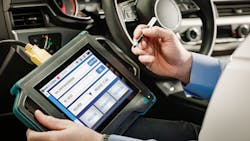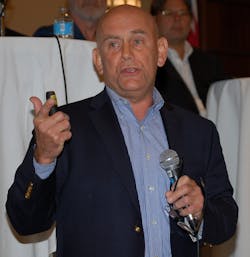Advanced driver assistance systems (ADAS) have become the standard for most vehicles in recent years to help promote safety, yet many drivers still are oblivious to how it affects their car and what the signs of it not functioning correctly are.
Facilities that perform repair work on these vehicles have the responsibility of making sure drivers have an understanding of all their vehicle’s functions and that a plan is set in place for when a vehicle with ADAS issues comes in.
Frank Terlep is vice president of ADAS Solutions for Opus IVS, a company providing automotive tech-focused collision repair solutions. With much of his work surrounding ADAS and its effect on the industry, he shared the best measures shops can take to inform their clients and guarantee safety after a repair.
Why do you think there is a lack of understanding of ADAS among consumers?
“I think that starts with when they purchase a vehicle, either used or new. In a lot of cases, they're not given a complete overview of what all the capabilities are, and more importantly, what happens if they need to have services (done). So yeah, I believe the majority of consumers lack the knowledge they need for ADAS.”
What are the consequences of consumers not having that understanding?
“They won't understand what the benefits of those safety technologies are. For example, if they don't truly understand what adaptive cruise control is, they may not completely understand what the benefits are or what the problems can be with it, right? If they don't understand that their lane departure is driven by the camera behind the windshield, they may not know why their car is pulling to the left or pulling to the right.”
Should technicians be receiving more training on ADAS?
“100%. Mandatory. I think ultimately there's going to be a certification process in place. Today, Ford has an ADAS certification requirement for shops to be certified to calibrate their cars.”
Do you think collision repair shops should consider adopting ADAS calibration services right now?
“First of all, to properly perform specific calibrations, a repair facility has to have specific facility requirements to be able to do them correctly. If they're going to do calibrations with radar, you need a lot of space. Typically, we say the minimum space in an existing shop is 2,500 square feet. So, should they get into it? The first question I always ask the shop is, ‘Do you want to be in the business?, number one,’ and then the second question is, ‘Do you have the facilities to do it correctly?’”
What are the options for a repair shop that may not have the resources for ADAS calibrations?
“I can tell you what's happening today: you're either a calibration center servicing other shops, you're a shop that chose to retrofit your facility to be able to do them, or you’re outsourcing your calibrations to a third party. … Our numbers tell us 80% of all facilities–repair facilities, collision and mechanical–do not, I repeat, do not, have the proper space to perform calibrations.”
In the case of a shop outsourcing ADAS calibration work, are there additional steps they can take before returning a customer’s vehicle to ensure safety?
“One of two things should happen. Number one, the third party that is doing the work or the calibrations should provide the shop with documentation that they validated it. Or the shop who was outsourced should validate it and document that it’s validated and it works.”
In what ways can repair shops educate their customers on how their vehicles’ ADAS functions?
“As soon as the vehicle comes into your facility for a service, one of the first things you should be doing is identifying the ADAS systems on the car. And by identifying the ADAS systems on the car, you can now educate the consumer on what systems they have on the car.
“And then you can have the conversation … ‘By the way, Mrs. Smith, have you disconnected or turned off any of those systems?’ … And then you also tell Mrs. Smith, ‘Because you've got those systems on your car, it may require additional services like a calibration.’
“And then also by identifying those systems up front, you can also have the conversation with Mrs. Smith saying, ‘When we're done repairing your car, it is our responsibility as a quality repairer to make sure all of your ADAS systems operate, which means if you've turned them off, our responsibility is to make sure they're all on when we deliver the car back to you because we wanted to make sure they operate correctly. And then if you want to turn them off when we're done, great.’”
About the Author
Kacey Frederick
Kacey Frederick is an assistant editor for Endeavor Business Media's Vehicle Repair Group.

